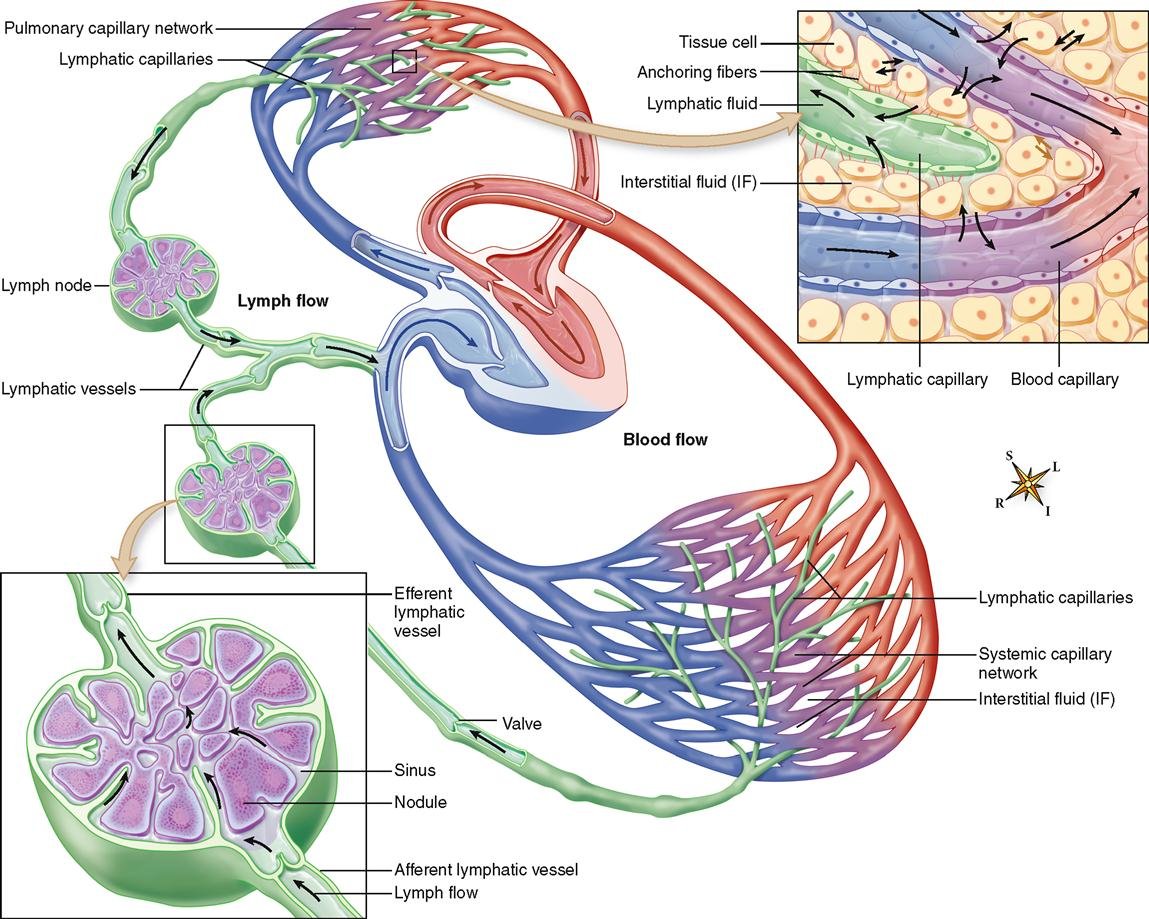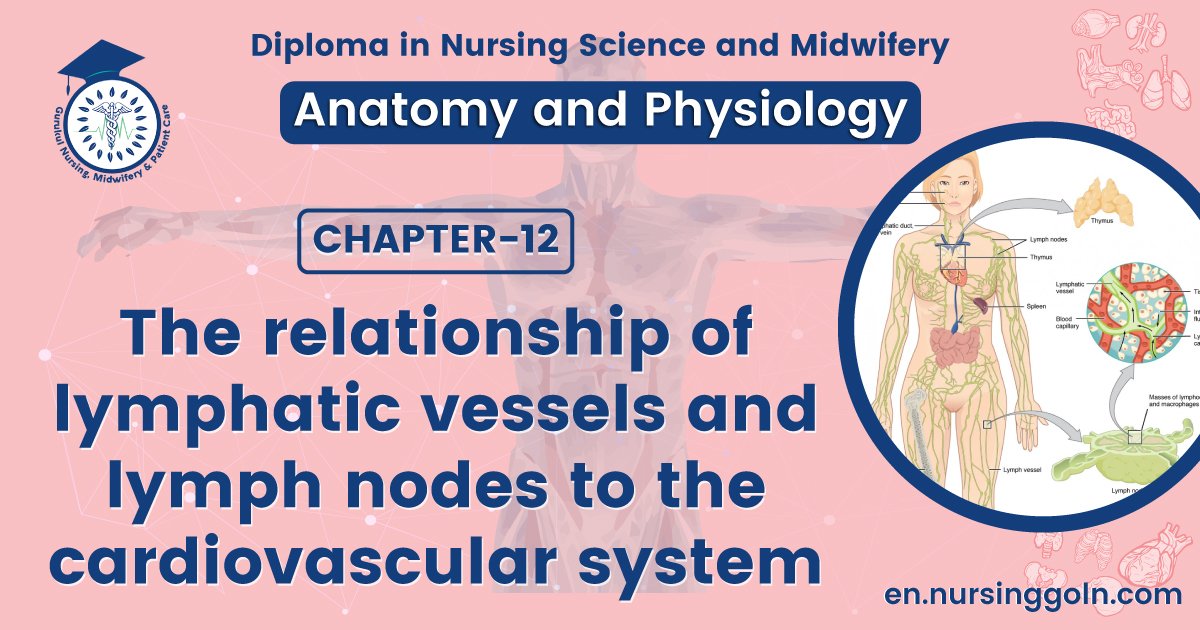The relationship of lymphatic vessels and lymph nodes to the cardiovascular system-The course is designed for the basic understanding of anatomical structures and physiological functions of human body, musculoskeletal system, digestive system, respiratory system; cardiovascular system; urinary system, endocrine system, reproductive system, nervous system, hematologic system, sensory organs, integumentary system, and immune system.The aim of the course is to acquire knowledge and skills regarding anatomy and physiology.

The relationship of lymphatic vessels and lymph nodes to the cardiovascular system
The sequence of fluid flow is: blood capillaries (blood plasma)→ interstitial spaces (interstitial fluid)→ lymphatic capillaries (lymph)→ lymphatic vessels and lymph nodes (lymph)→ lymphatic ducts (lymph)→ junction of jugular and subclavian veins (blood plasma).
Spleen
The spleen is the largest single mass of lymphatic tissue in the body. It lies between the stomach and diaphragm and is covered by a capsule of dense connective tissue. The spleen contains two types of tissue, called white pulp and red pulp.

White pulp is lymphatic tissue, consisting mostly of lymphocytes and macrophages Red pulp consists of blood-filled venous sinuses and cords of splenic tissue consisting of red blood cells, macrophages, lymphocytes, plasma cells, and granular leukocytes.
Blood flowing into the spleen through the splenic artery enters the white pulp. Within the white pulp. B cells and T cells carry out immune responses, while macrophages destroy pathogens by Phagocytosis.

Functions:
Within the red pulp, the spleen performs three functions related to blood cells.
- Removal by macrophages of worn out or defective blood cells and platelets,
- Storage of platelets, perhaps up to one-third of the body’s supply; and
- Production of blood cells (hemopoiesis) during fetal life
Read more:
